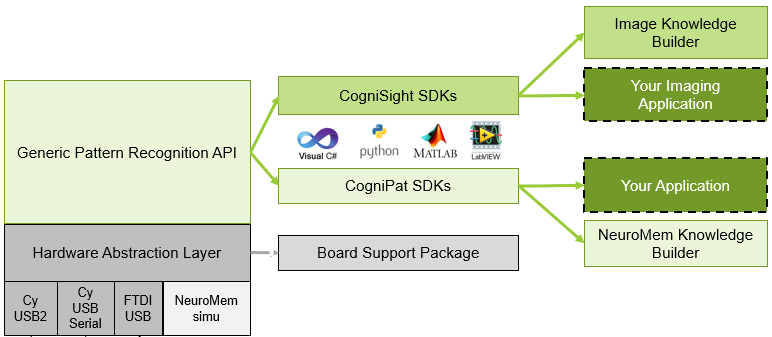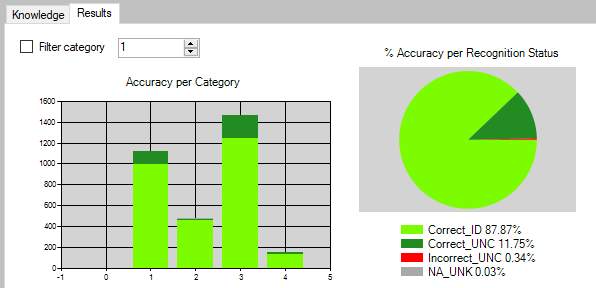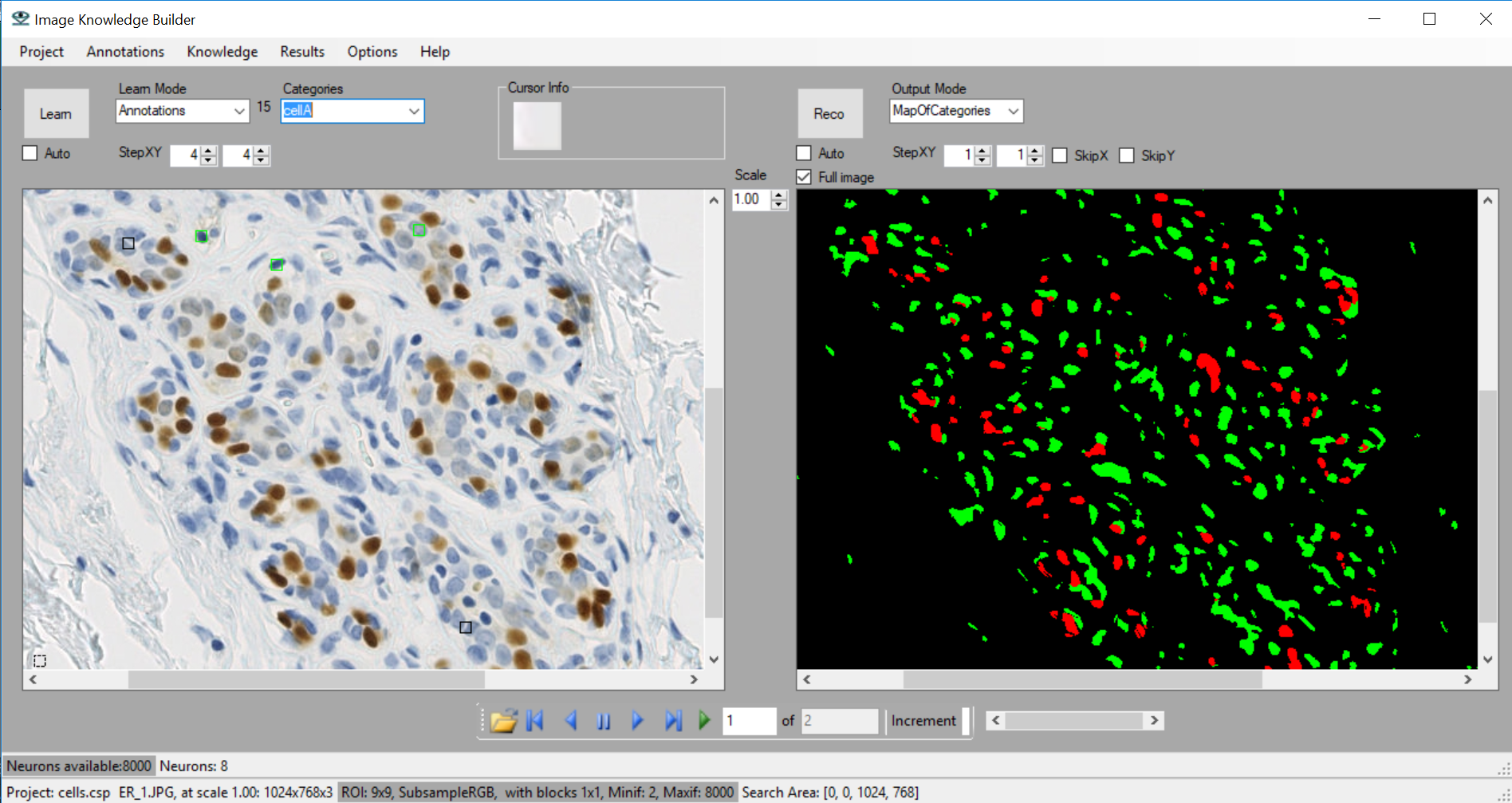Apps and APIs
Edge Intelligence and Machine Vision at your fingertip
- Prototype with a Knowledge Builder application
- Deploy with an SDKs
Knowledge Builders
Simple UI to guide you through the training and validation of a NeuroMem engine
Load
Collect data, visualize, curate, annotate with labels
Learn
Train the neurons with features extracted from annotations
Validate
Classify to identify and weigh uncertainties and confusion. Option to learn more.
Deploy
Export the knowledge built by the neurons for use by a run-time engine on the same or other platform.
NeuroMem KB
For feature vectors extrcated from any data types (text, data, waveforms, images)
Image KB
For the recognition of objects or anomalies in images and video frames.
CurieNeurons Library
Unleash the NeuroMem® neurons of your Arduino/Genuino 101 and add edge intelligence to your motion, signal and image recognition applications.
Software Development Kits
NeuroMem I/Os
Harwdare driver to access the neurons through their parallel bus or other communication bus such as I2C and SPI.
CogniPat API
For vectors derived from any data types (text, measurements, images and waveforms).
Single and batch learning and recognition. Knowledge building, transfer and more.
CogniSight API
For image files or video frames.
Select regions of interest, extract single or multiple features, single and batch learning and recognition locally or across the entire image.
Choice of packages for C/C++, Python, Matlab and LabVIEW development platforms.
Toolchain Summary



